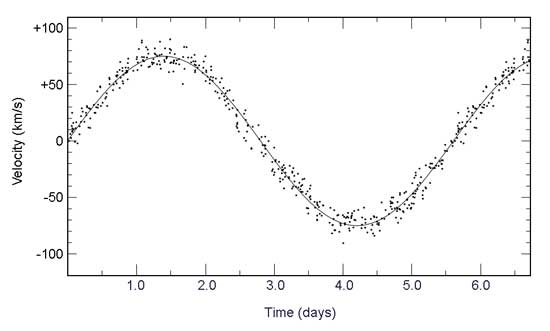The period and velocity of the black hole's companion

Astronomers can learn a number of things about objects in space by looking at subtle details and changes in the light we receive from those objects. The plot below shows the velocity of Cygnus X-1's optical companion as a function of time. The plot was generated using data from the optical spectrum of the star. The radial velocity we observe changes over time as the star orbits around Cygnus X-1. When the star is moving away from us, the velocity is positive. When the star is moving toward us, the velocity is negative.
From this plot it is possible to determine the tangential velocity and the period of the optical companion. Click on the image for a larger view. It might help to print out the plot so that you can draw on it to find the information you need.

Don't forget to make a note of the values for the period and velocity that you find – you'll need it to solve the mass equation!
 Learn more about how astronomers produced this plot
Learn more about how astronomers produced this plot
 Return to solving the binary equation for the black hole mass
Return to solving the binary equation for the black hole mass


